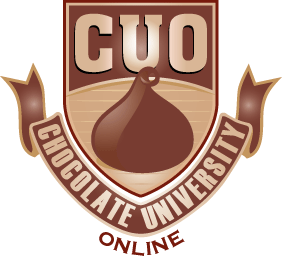I Scream, You Scream, We All Scream For Ice Cream
Ice cream is usually dubbed as “The Greatest American Dessert.” Even though this product is typically American, the United States cannot claim its origin and source.
Ice cream is defined as a frozen dairy dessert made from cream or milk, usually combined and manufactured along with other flavors and fruits. More often than not, it contains sugar. Sometimes, other sweeteners are used.
The ingredients are slowly stirred while the product is cooled down. This lets air be integrated and keeps the formation of ice crystals. The outcome will be a smooth, semi-solid foam that is extremely malleable and can be scooped easily. Drool now!
Little is known about the early history of ice cream, but this treat is said to originate in Europe. Now, the United States has been the lead among all the countries in the large and intense production of ice cream.
Before the advent of the today’s refrigeration, ice cream was a mere luxury that was intended to be eaten only on special occasions. It had to be produced with a source of ice, often cut from lakes and ponds at winter. The ice was stored in the ground, say, in brick ice houses and was insulated by straw.
In the past, the ice cream industry grew at a slower pace than it is today. Until 1900s, the total American output of ice cream didn’t go beyond 30 million gallons annually.
The yearly manufacturing and production of it has been working its way up on a steady and exponential rate with the introduction of hard and soft ice cream, nowadays produced at more than a billion gallons a year. In accordance with the International Dairy Foods Association, “approximately 1.53 billion gallons of ice cream and related frozen desserts were produced in the U.S. in 2011.” Stunning, eh?
This just means that the annual per capital consumption is not less than 20 pounds. Additionally, this means that 9% of total milk production goes to the ice cream industry.
Where’s the chocolate in this article? It’s here, yep it’s here now. Chocolate ice cream is always near the top in flavors. Vanilla always wins. That’s the sad ending.
Categories: chocolate articles Tags: Chocolate History, chocolate ice cream, cream, ice.cream, means, production, today
Chocolate For Women
Can you even believe there are sexist chocolates?! Funny, I know.
Ever since, the media have clamored about gender specific food items available in the market. Dr. Pepper for Men and Chick Beer? Come on. They’re a bit too annoying. But despite the infamous marketing strategies of such companies, some other companies just can’t resist to follow their lead.
Cadbury launched its latest chocolate wafer bar called Crispello. This is actually the first new chocolate product the company released since the 1990′s. It has been quite a stretch of time, right? I guess it is just about time.
And in such lengthy period of time, all they could think of was this particular marketing strategy, targeting the female gender? Yes, we all know it. The xx gender is the more vulnerable one and chocolate junkie women who just cannot get enough of anything sweet are an easy target.
However, there are some women who can actually resist the tempting chocolate just so they can maintain their figure. Not like it’s a surprise. Body over food is their motto. So, Cadbury took this as an opportunity. They zeroed in on the women’s weakest point with a sweet and tasty wafer covered in chocolate awesome goodness which is low in calorie. That way, you won’t have to fret thinking about gaining a few inches around the waist. What more could you ask for?
It’s best, though, to keep any branding from fooling you. Certainly, you won’t get poisoned if you try it on for size and you happen to be a male. For the male species, just take this as a hint, it might be a nice idea to give some as a gift to a girl you are wooing.
What can you say about this chocolate treat? Is it yay or nay?
Categories: chocolate articles Tags: 1990, Cadbury, cannot, Chocolate for Women, Crispello, point, sweet
M&M-colored Honey
When a baby is just born, he or she only see shades of black and white, or so they say. As the little bundle of joy grows bigger, it gets attracted to more vibrant hues. When schooling starts, one of the most important lessons taught to him or her is the different colors.
This only displays how important color is in our lives. The same thing goes for food. The more variety of colors there is, the more it is pleasing to the eyes, more appealing. That is the reason why a lot of food manufacturing companies maximize this phenomenon. This is especially true with the candy brands.
Imagine how successful the use of color has been for M&M’s. They don’t just cater to the children, but also those who are young at heart.
You can enjoy those tiny bits of color coated chocolates right into your mouth. You can grab a random handful or choose specific colors, your call, but turns out that these colorful treats are not seen as pleasing to the beekeepers of France.
France is the largest producer and supplier of honey in all of Europe. Annually, it is estimated that they generate around 18,330 tons of honey. Sweet, eh?
Based on the Alsace chamber of agriculture, there are roughly 2,400 beekeepers in their specific region that tends 35,000 colonies, producing approximately 1,000 tons of honey a year.
August of last year, about a dozen or so of the Alsace area beekeepers began to notice that the honey produced by their bees became bluish and greenish!
Following an investigation, they discovered that is was because of a biogas plant of an M&M factory located around the area. The bees have been eating the residues and this contributed to the colorful end result of their honey.
According to Alain Frieh who is the president of the Apiculturists’ Union, this situation is actually a problem. Despite the attractive look and the honey-like taste, the product is not salable.
What a bummer, right? Perhaps they should add more color and ship it to the U.S. Strangely-colored ketchup was all the rage a few years ago, neon-blue honey sounds just as good!
Categories: chocolate articles Tags: Apiculturists’ Union, approximately, bees, colors, despite, France, Honey, M&M's
Do ‘Belgian Techniques’ make Belgian chocolate?
Question by Gir-een: Do ‘Belgian Techniques’ make Belgian chocolate?
Chocolove claims to make Belgian chocolate in Boulder, Colorado. Their ‘about’ page reads: “all-natural ingredients and the classic techniques of Europe’s finest chocolatiers”
http://www.chocolove.com/about.htm
Best answer:
Answer by Koenraad
I don’t think that if you follow Europe’s techniques, you will make Belgian chocolate, since Belgium is only a small part of Europe. It is however a major chocolate producer.
When saying something is all natural and produced with classic techniques, it is in fact saying the creation of chocolate is going through the following steps:
1. Picking the Cacao beans
2. Drying and Fermenting the Cacao Beans
3. Mixing of the Cacao Beans
4. Burning the Cacao Beans
5. Grinding the Cacao Beans
This is where they send it to the country of production of the actual chocolate
6. Mix Cacao Beans with ingredients (sugar, extra flavours,…)
7. Grinding and mixing together of everything
8. Heating up the mix to 45° Celcius to 75° Celcius while adding Cacao Butter or Natural Soy Lecithine.
9. Transforming it into shapes.
So when this technique is being used, you could say that this could be Belgian chocolate, regarding the right amounts of sugar, Cacao Butter and other ingredients have been used.
What do you think? Answer below!
Categories: chocolate questions Tags: Belgian, Cacao Beans, CHOCOLATE, Question, Techniques, think
Math And Chocolate
It’s no secret that many of us dread numbers, especially when it comes on a test paper. Many of us have math as waterloo. You might deem this irrelevant as nonsensical, but chocolate and math actually have a strong link. How come? Read on.
A group of researchers presented a study during the annual Brighton Show at the British Psychological Society that showcases how chocolate containing compounds of flavanols which is a part of a group of chemicals called polyphenols can make mental arithmetic easier for people by means of boosting the blood supply to the brain.
According to the said research, the volunteers who were given 500mg of flavanols in their cocoa drinks had lower chances of experiencing mental draining. Professor David Kennedy who is the director of the performance and nutrition research centre at Northumbria University and co-author of the study said “For things that are difficult to do, mentally demanding things that maybe crop up in your work it could help.”
Such researcg involved 30 volunteers in groups of three were instructed to count backwards randomly between 800 and 999 as chosen by the computer. These people were provided with cocoa drink first and was discovered that they were quick and accurate with the calculations later on. The participants were observed to be less tired in spite of being asked to do the task over and over again within an hour.
If you lack in the department of math problem-solving skills, a cocoa drink or anything rich in flavanols and you can continue getting on with your life without having to fear numbers. Okay, that’s pretty sugarcoated, but you get the picture!
Categories: chocolate articles Tags: CHOCOLATE, chocolate studies, cocoa, math, numbers, people




